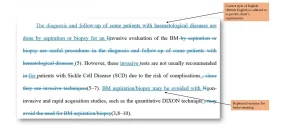How to structure content for your next research paper
- May 3, 2024
- Posted by: IRP Academy
- Category: Knowledge Base

Academic papers adhere to specific formatting and language conventions, often outlined by journals. These guidelines cover details like font type, size, margins, and spacing, along with the overall structure of the paper. Some journals even offer detailed instructions for each section. Ensuring your paper aligns with these specifications is crucial; any deviation may result in revisions and publication delays.
Many research editing services offer additional formatting assistance, ensuring your paper meets the specific formatting guidelines of your target journal.
The structure of a paper typically varies depending on its type. For instance, a case report follows a different structure compared to a research article. Research articles commonly adhere to the IMRAD format, which stands for Introduction, Methods, Results, and Discussion.
Before delving into the main text, the abstract takes the spotlight. Traditionally, it encapsulates the structure and essence of the main content within 100-300 words. Consider the abstract as a tantalizing preview of your work. It’s meant to elucidate your study in layman’s terms, offering enough insight to captivate the reader’s curiosity.
The Introduction section serves as the platform for the researcher to elucidate the rationale or driving force behind the study. Typically, it is crafted in passive voice. It is imperative to include only pertinent information rather than inundating the reader with every detail concerning the research topic. The structure of this section should seamlessly transition from providing background information to articulating the research question and proposed solutions. Moreover, it is crucial to reference previous studies that have tackled the research question, outlining their successes and failures in addressing it. Concluding this section with a succinct yet compelling statement delineating how the researcher intends to tackle the research question adds a strong finish.
If you feel you require assistance with the structure and content of this section, consider seeking out research editing services. These services offer expert guidance on the flow and organization of your text, ensuring clarity and coherence.
The following section is the Methods, alternatively known as Materials and Methods. This segment outlines how the authors approached addressing the research question. It is conventionally written in the past tense. Clarity and precision are paramount here, as your methodology serves as a guide for other researchers in the field to better comprehend your study.
The Results section serves to showcase the outcomes of your experiment or research study. It can consist solely of text or incorporate visual aids such as illustrations. Typically, scientific papers integrate tables, figures, and graphics into this section. It’s advisable to present data-heavy information in tabular format. Additionally, data should be presented either as text or tables, but not both simultaneously.
You initiated the paper by providing a contextual framework for selecting this research problem. Following that, you elucidated the methodology employed in conducting the research. The subsequent section unveiled the outcomes of your experiment or research endeavor. Now, the imperative task is to interpret these results and attribute significance to them.
The Discussion section serves as the platform to contextualize your findings, draw comparisons with existing literature, and articulate the conclusions drawn from your research. It’s crucial to highlight the limitations of your study alongside how it addressed the research question. Whether integrated within the discussion or presented separately, the conclusion summarizes the key insights derived from your study.
The organization of your research paper should be coherent and orderly, ensuring a logical flow of ideas throughout the text. To ensure this, consider utilizing research editing services that offer comprehensive evaluations beyond basic grammar checks.










